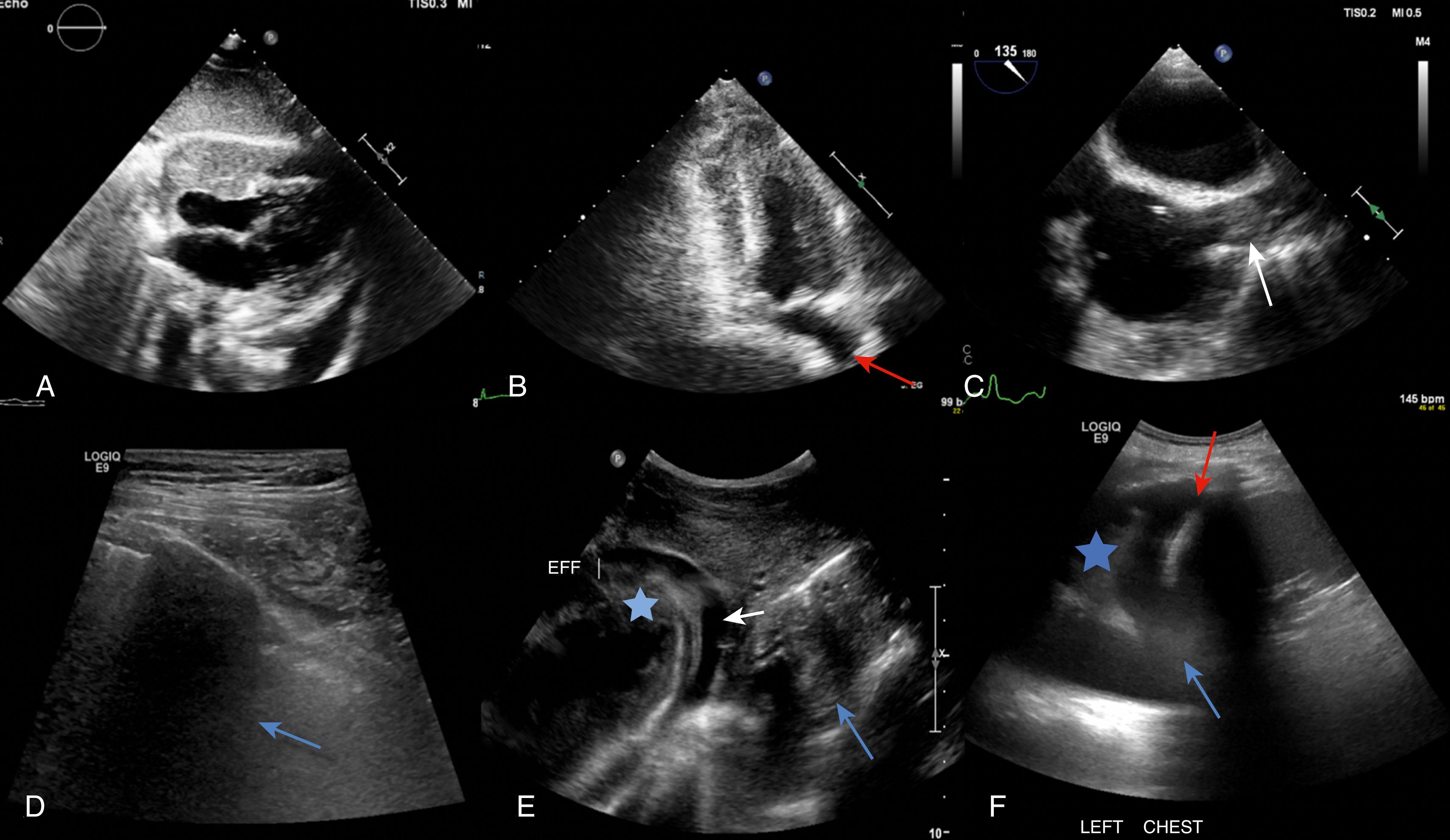Physical Address
304 North Cardinal St.
Dorchester Center, MA 02124
The authors would like to thank Drs. Itzhak Kronzon, Robert J. Siegel, Hezzy Shmueli, and Neil L. Coplan for their contributions to the previous editions this chapter.
There are many well-described typical cardiac tumors (both primary and metastatic to the heart) that are discussed elsewhere in this text. However, intra- and extracardiac masses can present in various ways, requiring close attention on the part of the echocardiographer. Fig. 163.1A demonstrates a large pericardial tumor seen in the subcostal view that is compressing right-sided structures. Fig. 163.1B shows a two-chamber view with deformation of the right atrium by an apparent mass causing extrinsic compression. Transesophageal echocardiography (TEE) allows for a detailed assessment of the superior vena cava in the bicaval view, which is shown with a mass traversing into the right atrium ( Fig. 163.1C ). Although the causes of these masses may be unknown without histopathologic assessment, recognition of their presence may warrant further investigation.

Become a Clinical Tree membership for Full access and enjoy Unlimited articles
If you are a member. Log in here